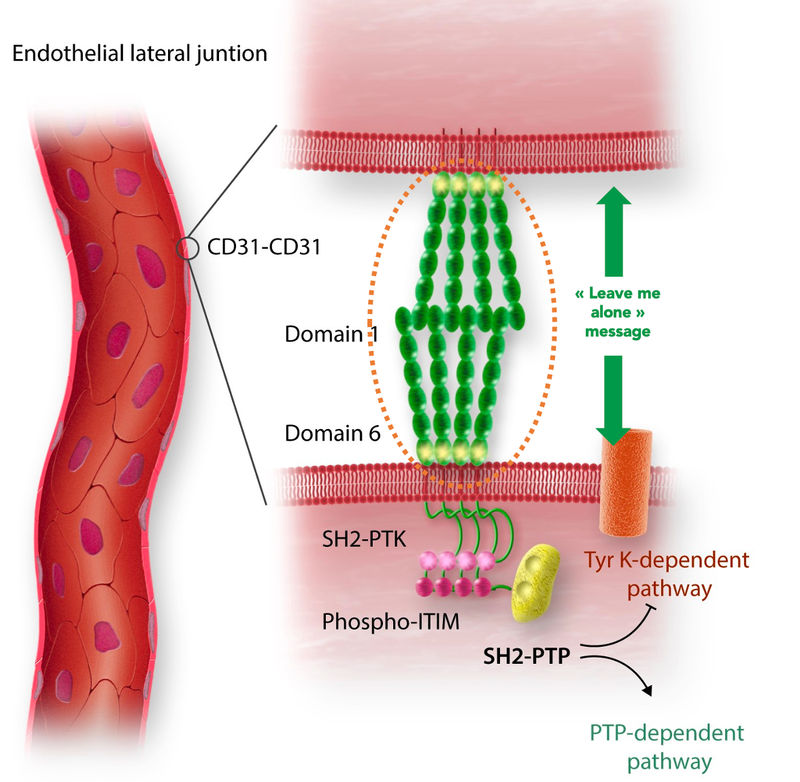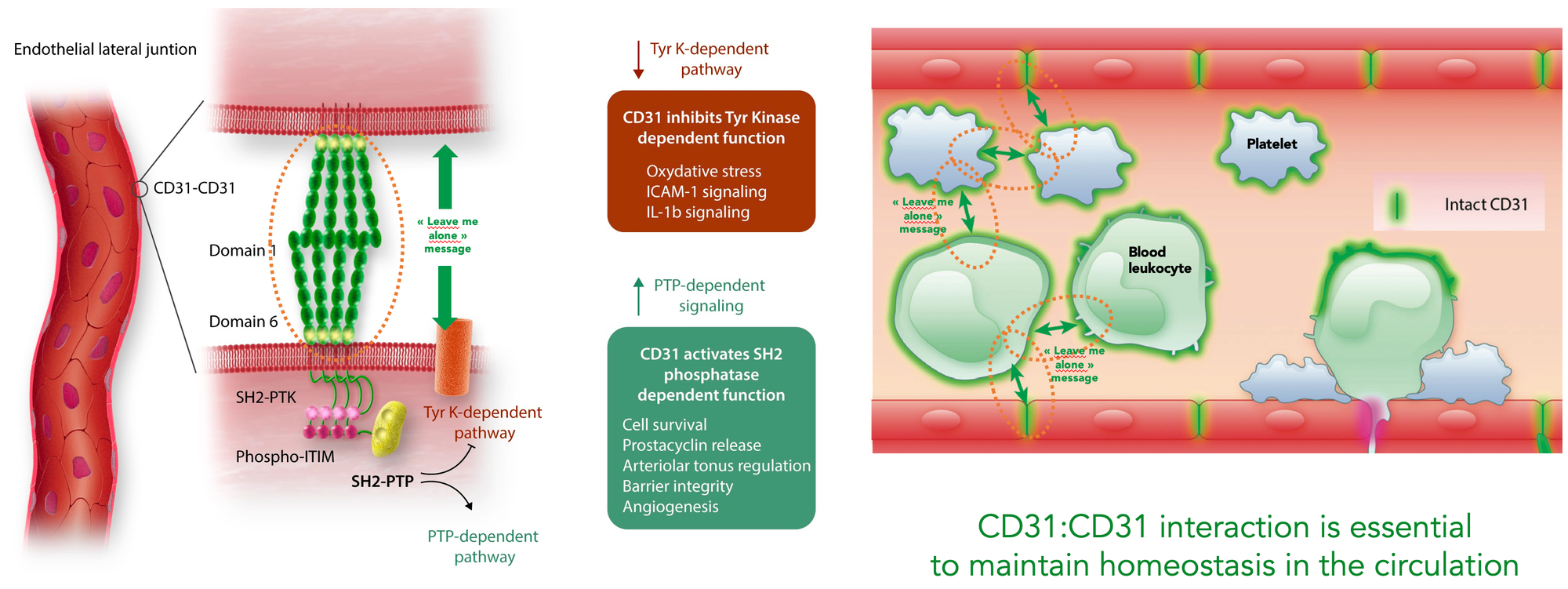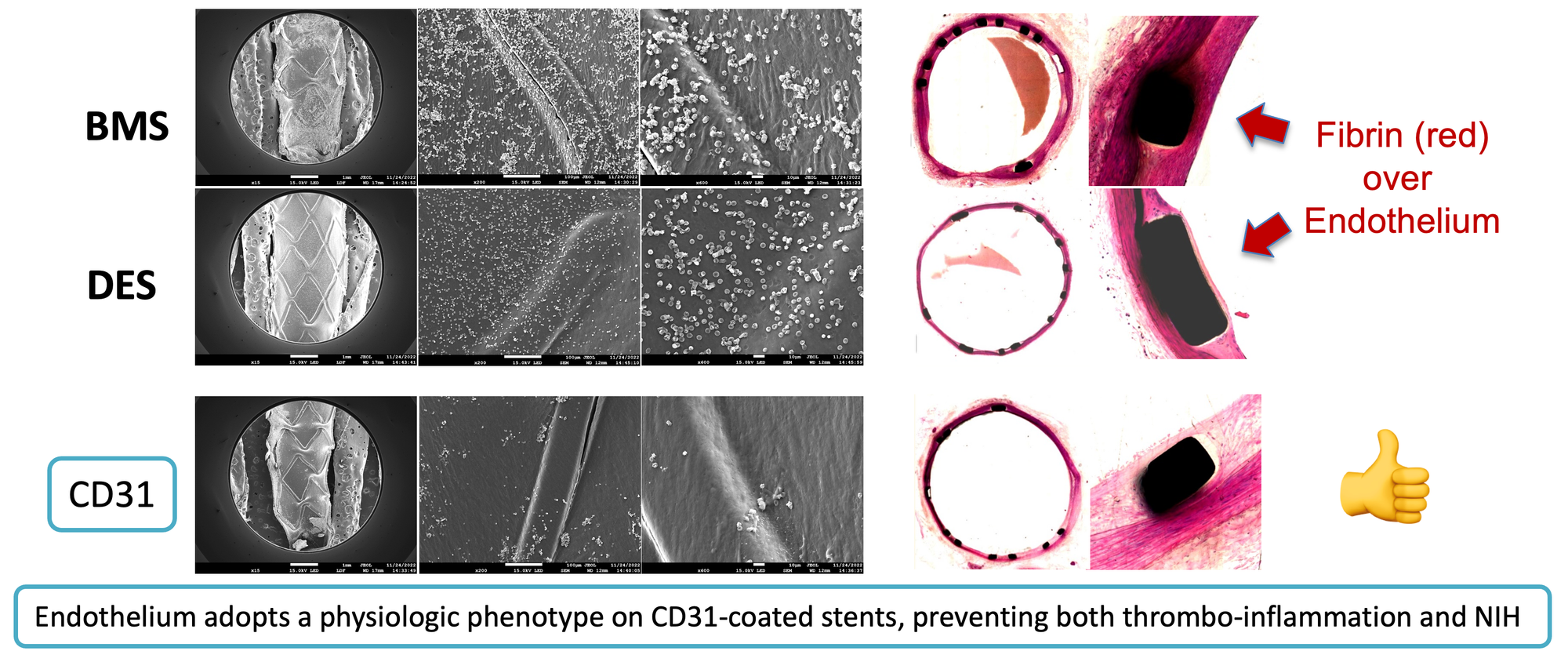CD31

Ever wondered why our blood does not coagulate in our arteries? Why the platelets do not adhere to the inner "surface" of our blood vessels to start their cascade mechanism leading to a thrombus?
This comes from CD31: a trans-membrane protein that is present in the cell membrane of our endothelial, platelet and leukocytes cells. The largest part of these proteins are protruding - like fingers - outside of our cells, and serve as "ID cards". When a platelet meets an endothelial cell which paves the surface of our vessels, the tip of the finger part of CD31 belonging to the endothelial cells and to the platelet interdigitate (in what is called a trans-homophilic interaction), and... nothing happens! They exchange a "go away" message, and the platelet just bounces on the endothelial layer! [1]
 It is the absence of such CD31 tips on a surface that makes the platelet break its own CD31 tips, which triggers a number of reactions inside the platelets calling for adsorption of the platelets, and further recruitment of other platelets and leukocytes - in short the cascade of accute inflammation leading in particular to neo-intimal hyperplasia.
It is the absence of such CD31 tips on a surface that makes the platelet break its own CD31 tips, which triggers a number of reactions inside the platelets calling for adsorption of the platelets, and further recruitment of other platelets and leukocytes - in short the cascade of accute inflammation leading in particular to neo-intimal hyperplasia.
From there, we made the hypothesis that by grafting peptides mimicking the tips of the CD31 protein, we could fake the presence of a healthy endothelium, and - in a way - "bluff" platelets to truly camouflage any device!

AlchiMedics' CD31 coating is an ultra-thin (< 50 nm) layer, based on proprietary peptide sequences that are covalently bonded to the surface of the implant, and mimicking the surface of a healthy endothelium. It disables the adhesion of platelets and thombosis, while boosting the formation of a complete - non-inflammatory - endothelium [2].

For a similar endothelialization extent, only the endothelium covering CD31 stents prevents platelet adhesion at 30 days post-implantation in rabbit:

We also witness the absence not only of a neointima, but also of any leukocyte, proving that the endothelium formed is non-pro-inflammatory (unlike most artificial materials).